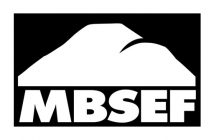Introduction
In manufacturing, selecting the right parts washer is a critical decision that can significantly impact a facility’s efficiency, quality, and profitability. This is especially true for small facilities, where space constraints and limited resources pose unique challenges. Choosing a parts washer that meets the specific needs of a small facility requires careful consideration of various factors, such as the size of the parts to be cleaned, the number of parts to be processed, and the cleanliness specifications required for the next step in the manufacturing process.
Assessing Your Facility’s Needs
Before selecting a parts washer, it is essential to thoroughly assess your facility’s needs. The first step is to determine the size of the parts that will be cleaned. This information will help narrow down the options and ensure that the chosen parts washer can accommodate the dimensions of the components. Next, estimate the number of parts that must be processed in a given timeframe. This will help determine the required throughput capacity of the parts washer.
Defining cleanliness specifications is another crucial aspect of the assessment process. Different manufacturing processes and industries have varying cleanliness requirements. For example, the medical device industry has stringent standards for cleanliness, while the automotive industry may have more lenient requirements. Understanding the specific cleanliness standards for your facility will guide you in selecting a parts washer that can deliver the desired results.
Lastly, consider the next step in the manufacturing process. The parts washer should be able to clean the components effectively, ensuring they are ready for the subsequent stages of production. This may involve removing specific contaminants, such as oils, greases, or metal chips, to prevent any adverse effects on the final product quality.
Space Constraints in Small Facilities
Small facilities often need more floor space. Every square foot count and equipment placement must be carefully planned to maximize efficiency and workflow. When choosing a parts washer for a small facility, it is essential to consider its footprint and how it will fit into the existing layout.
Vertical space utilization is another strategy that can be employed in small facilities. Parts washers with a compact design and vertical orientation can help save valuable floor space while still providing the necessary cleaning capabilities. Some parts washers offer adjustable shelving or racks to accommodate different part sizes and optimize the cleaning process.
Mobility and flexibility are also important considerations for small facilities. Parts washers with casters or wheels allow for easy movement and reconfiguration of the equipment as needed. This flexibility enables small facilities to adapt to changing production requirements and maximize the use of their limited space.
Types of Parts Washers Suitable for Small Facilities
Several types of parts washers are particularly well-suited for small facilities. Benchtop parts washers are compact and designed to fit on a workbench or table. They are ideal for cleaning small parts and have a minimal footprint, making them an excellent choice for facilities with limited space.
Compact floor-standing parts washers are another option for small facilities. These units offer a balance between cleaning capacity and space efficiency. They typically have a smaller footprint than full-size parts washers but still provide adequate cleaning power for small—to medium-sized parts.
Modular parts washers are a versatile solution for small facilities. These systems consist of interchangeable modules that can be configured to meet specific cleaning requirements. They offer flexibility and can be easily adapted as the facility’s needs change.
Multi-stage parts washers are designed to clean parts through a series of stages, each targeting specific contaminants or achieving different cleanliness levels. While they may require more space than single-stage washers, multi-stage systems can be a valuable investment for small facilities that require high cleanliness standards or have complex cleaning needs.
Factors to Consider When Selecting a Parts Washer
When choosing a parts washer for a small facility, several key factors should be considered to ensure the best fit for your specific needs. Cleaning performance is paramount, as the parts washer must effectively remove contaminants and achieve the desired level of cleanliness. Look for washers with advanced features such as high-pressure sprays, ultrasonic cleaning, or agitation systems that enhance cleaning efficiency.
Energy efficiency is another important consideration, especially for small facilities looking to minimize operating costs. Parts washers with energy-saving features, such as insulated tanks, programmable controls, or efficient heating systems, can help reduce energy consumption and lower utility bills.
Ease of maintenance is crucial for small facilities with limited resources. Choose an aqueous parts washer for simple and quick maintenance tasks, such as easy filter access, straightforward cleaning procedures, and readily available replacement parts. This will help minimize downtime and keep the parts washer running smoothly.
Safety features should also be a top priority when selecting a parts washer. Look for models with built-in safety measures, such as automatic shut-off valves, temperature controls, and leak detection systems. These features protect the operators and the equipment, ensuring a safe working environment.
Cost-effectiveness is a critical factor for small facilities with limited budgets. While it may be tempting to opt for the lowest-priced option, it is essential to consider the long-term costs, including energy consumption, maintenance requirements, and the durability of the parts washer. Investing in a high-quality, efficient parts washer can provide a better return on investment in the long run.
Optimizing Your Parts Washing Process
Once you have selected the right parts washer for your small facility, optimizing the parts-washing process to maximize efficiency and effectiveness is important. Proper placement of the parts washer is essential for smooth workflow and easy access. When determining the ideal location, consider the proximity to other equipment, the flow of parts through the facility, and the ergonomics of operators.
Utilizing space-saving accessories can further optimize the parts-washing process. Accessories such as part baskets, racks, and trays can help organize parts during cleaning and maximize the washer’s capacity. Look for accessories compatible with your specific parts washer model and easily integrated into your existing setup.
Implementing lean manufacturing principles can also help streamline the parts-washing process in small facilities. This involves identifying and eliminating waste, such as unnecessary movement, waiting times, or overprocessing. By applying lean principles, small facilities can improve efficiency, reduce costs, and maximize the utilization of their parts washers.
Training employees on proper usage of the parts washer is crucial for achieving consistent results and prolonging the life of the equipment. Develop standard operating procedures (SOPs) that clearly outline the steps for loading, operating, and maintaining the parts washer. Provide hands-on training to ensure that all operators are familiar with the equipment and can troubleshoot common issues.
Future-Proofing Your Investment
When selecting a parts washer for a small facility, it is important to consider the current needs and the potential for future growth and changes in requirements. Choosing a parts washer with scalability in mind can help future-proof your investment. Look for washers that can be easily upgraded or expanded to accommodate increased production volumes or larger part sizes.
As cleanliness requirements evolve, it is crucial to have a parts washer that can adapt to these changes. This may involve adjusting cleaning parameters, such as temperature, pressure, or cleaning agent concentration, to meet new standards or regulations. A flexible parts washer that can handle various cleaning scenarios will be better equipped to handle future challenges.
Upgrading and customization options are valuable features to consider when future-proofing your parts washer investment. Some manufacturers offer modular designs or optional accessories that can be added later to enhance the washer’s functionality. Small facilities can start with a basic configuration and gradually upgrade as their needs change without replacing the entire unit.
Conclusion
In conclusion, selecting the right parts washer for a small facility involves carefully considering factors such as part size, processing volume, cleanliness specifications, and space constraints. By assessing your facility’s needs, evaluating available parts washer types, and prioritizing key factors like cleaning performance, energy efficiency, maintenance, safety, and cost-effectiveness, you can make an informed decision that benefits your facility in the long run. Optimizing the parts washing process, learning from case studies, and future-proofing your investment will ensure that your chosen parts washer provides consistent cleanliness, improves productivity, and contributes to the success of your small manufacturing facility.




